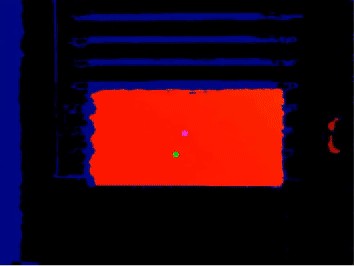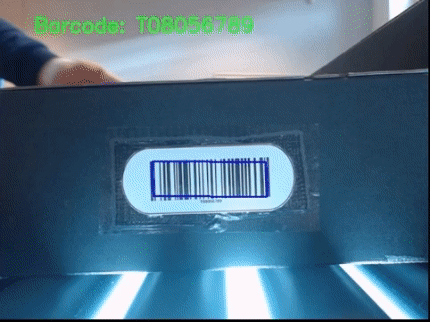Students : Freek Verloop, Jan Martijn Lobregt, Ibnu Haafizha Yoga, Mumtaz Rahmawan
The company
Logicall processes approximately 2,500 boxes every day for one of their customer projects. The manual stacking process requires the deployment of 1-2 full-time employees, which leads to higher labor costs and employee delays. Logicall engaged us to devise a system that would address these challenges and improve overall productivity.
The solution
Our solution consists of the following components:
Vision system
Our solution includes an advanced vision system with dual functionalities for both the conveyor belt and the pallet. Regarding the conveyor belt, the camera within the vision system is used to identify boxes by type and to accurately determine the center of the box. At the same time, the vision system focuses on the pallet, determining the center and angle of the pallet relative to the robot. This ensures accurate placement of boxes on the pallet and optimizes the stacking process.

Barcode scanner
Before the boxes are placed on a pallet, the barcode on each box is scanned. This scanned barcode data is then saved to an Excel list. This approach ensures an accurate registration of which boxes are stacked on which pallet.

Stacking system
A custom-written algorithm is used to determine the place of the boxes. The algorithm chooses a configuration based on the input flow of the boxes. When the algorithm chooses a group of four similar boxes, they are stacked on the pallet. However, in the event that there is another box of a different type among these four identical boxes, this box is placed on a separate conveyor belt. This separate conveyor belt brings the box back to the main conveyor belt.
End of arm tool
To transport the boxes from the roller track to the pallet, we designed an end-of-arm tool utilizing four suction cups. The spacing between the suction cups is specifically designed to enable the end-of-arm tool to pick up and ultimately stack the four different boxes on the pallet without requiring a different end-of-arm tool.
Furthermore, a camera is mounted on the end-of-arm tool. This camera plays a crucial role in detecting boxes on the conveyor belt, determining the center of the boxes, and identifying the specific box type. Additionally, the camera is also employed for pallet recognition, allowing the entire system to adapt to different pallet configurations.
User interface
We also have developed an user interface to operate the system. This interface allows the operator to perform various functions, such as starting the system, viewing images from the vision system and the barcode scanner, and downloading an Excel list of all the scanned barcodes on the boxes that are placed on the pallet. In addition, the interface provides insight into the buffer of the stock of boxes that is connected to the stacking algorithm. This gives the operator complete control and overview of the process.
Conclusion
By combining the end-of-arm tool with suction cups and a comprehensive vision system, our automated solution not only eliminates the need for manual stacking, but also improves speed and adaptability to different case and pallet configurations. Logicall can now experience a significant reduction in labor costs and an increase in overall operational efficiency.